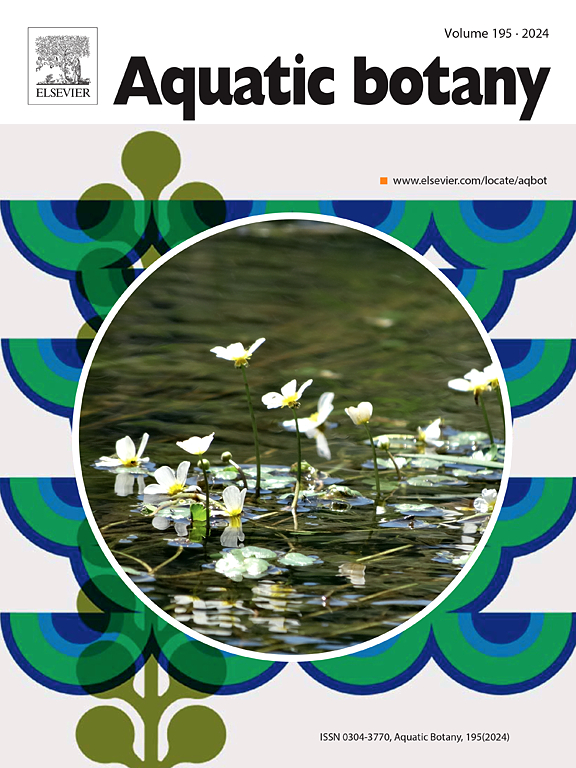Flowers from the sea: First record of seagrass flowers in the Arabian Gulf
IF 2.6
4区 生物学
Q2 MARINE & FRESHWATER BIOLOGY
引用次数: 0
Abstract
The Arabian Gulf is home to three tropical seagrass species, Halodule uninervis, Halophila ovalis and H. stipulacea, which together cover an area of ∼ 6 % of the world’s seagrass distribution. To date, seagrass flowers and fruits have never been documented in this region. In March 2025, we conducted a sampling survey in four locations along Abu Dhabi’s coastline and here report for the first time on the presence of both flowers and fruits for H. ovalis in two studied sites, H. stipulacea flowers in another site. No flowers nor fruits were found for H. uninervis from any of the four investigated populations. One H. ovalis population had more than 46 % of plants bearing flowers, while other populations exhibited very limited numbers of flowering individuals, demonstrating highly variable sexual reproductive effort among different seagrass species and populations in the region. Our findings fill a critical gap in knowledge in the regional seagrass biology and offer important implications in seagrass research and restoration activities across the Arabian Gulf.
来自海洋的花:阿拉伯湾海草花的第一个记录
阿拉伯湾是三种热带海草物种的家园,它们是Halodule uninervis, Halophila ovalis和H. tolacea,它们总共覆盖了世界海草分布的约6% %的面积。到目前为止,在这个地区还没有记录到海草的花朵和果实。2025年3月,我们在阿布扎比海岸线沿线的四个地点进行了抽样调查,首次报道了两个研究地点同时存在卵圆菊的花和果实,另一个地点存在托花菊。在四个被调查的种群中,没有发现任何一种花或果实。一个卵形海草种群有超过46% %的开花植物,而其他种群的开花个体数量非常有限,表明该地区不同海草物种和种群的有性繁殖努力差异很大。我们的发现填补了区域海草生物学知识的关键空白,并为整个阿拉伯海湾的海草研究和恢复活动提供了重要的意义。
本文章由计算机程序翻译,如有差异,请以英文原文为准。
求助全文
约1分钟内获得全文
求助全文
来源期刊

Aquatic Botany
生物-海洋与淡水生物学
CiteScore
3.80
自引率
5.60%
发文量
70
审稿时长
6 months
期刊介绍:
Aquatic Botany offers a platform for papers relevant to a broad international readership on fundamental and applied aspects of marine and freshwater macroscopic plants in a context of ecology or environmental biology. This includes molecular, biochemical and physiological aspects of macroscopic aquatic plants as well as the classification, structure, function, dynamics and ecological interactions in plant-dominated aquatic communities and ecosystems. It is an outlet for papers dealing with research on the consequences of disturbance and stressors (e.g. environmental fluctuations and climate change, pollution, grazing and pathogens), use and management of aquatic plants (plant production and decomposition, commercial harvest, plant control) and the conservation of aquatic plant communities (breeding, transplantation and restoration). Specialized publications on certain rare taxa or papers on aquatic macroscopic plants from under-represented regions in the world can also find their place, subject to editor evaluation. Studies on fungi or microalgae will remain outside the scope of Aquatic Botany.
 求助内容:
求助内容: 应助结果提醒方式:
应助结果提醒方式:


